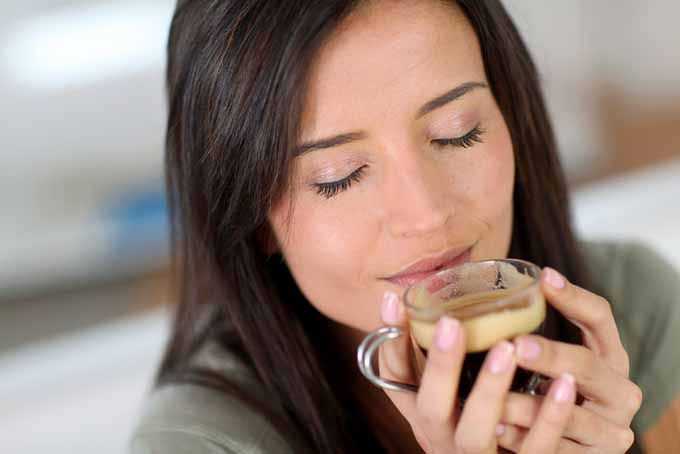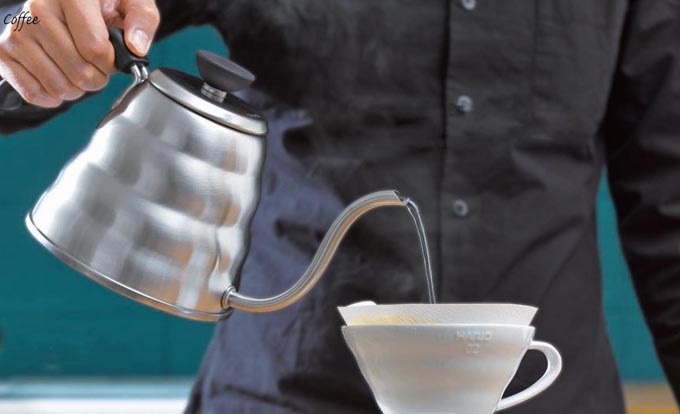If you’ve decided to invest your time (and money) in high-quality beans and more precise brewing methods, you might want to spend some time learning how to taste all of the new flavors making their way into your cup.

This may sound a little pretentious, but if you want to get the most enjoyment out of your coffee, it’s worth taking an extra few minutes to slow down and pay attention to the subtle nuances of your drink.
What exactly should you be looking for? Read on!
What To Look For
Three key aspects of coffee tasting include aroma, flavor, and “mouthfeel” or “body” (you’ll experience the best of all three if you taste at least a sip or two without cream or sugar – both can dilute the finer flavor notes and distort the mouthfeel of the coffee).
Also, take notes if you can. This will allow you to compare your tastes over time as you hone in on your personal preferences.
Aroma
To experience the full aroma, try “cupping” the coffee before you drink it. Place your hand over your cup in a round shape to trap the volatile flavor particles, and then take a sniff.
What do you notice?
Although there are some standard smells to look for, there really isn’t a wrong answer. Just go with what makes sense to you.
Because coffee shares a lot of components with other aromatic crops, you might notice scents that remind you of chocolate, wine, fruits, spices, or even wood or earth.
Flavor
Now take a good, long sip of the black stuff. You can even slurp if you feel like it – this allows air into the mix. Let the coffee fill your whole mouth.
What tastes jump out at you? Are they bright and acidic like citrus fruits? Or are they smoky and earthy? Are there a lot of sweet flavors like caramel? Do they match up with the scents? Where in your mouth do the flavors hit?
Off flavors, like sourness (due to under-extraction), bitterness (over-extraction) a stale flatness (beans that are too old), rancidity, or fermentation can interfere with the natural flavors and indicate underlying problems.
But barring extreme negative flavors like the above, enjoy exploring the wide range of flavors coffee has to offer.
Body
Lastly, consider the mouthfeel or body. Does the coffee seem rich? Or is it thin and watery?
You can think of “body” in terms of milk types – a full-bodied coffee will taste rich like whole milk, and a coffee with less body feels more like skim in your mouth.
Brewing method can also affect body. Filters that allow more particulates through or extract more oils produce more body.
Finally, coffee (unlike tea) should not generally leave behind a dry, astringent aftertaste.
Using these notes, you should be able to zero in on which flavors and growing regions speak to you, helping you make each cup a little more perfect. Happy tasting!
Read more on coffee tasting or what to look for in a top quality cup of coffee.
What coffee flavors do you gravitate towards?
About Mike Quinn
Mike Quinn spent 20 years in the US Army and traveled extensively all over the world. As part of his military service, Mike sampled coffee and tea from all virtually every geographic region, from the beans from the plantation of an El Salvadorian Army Colonel to "Chi" in Iraq to Turkish Coffee in the Turkish Embassy in Kabul, Afghanistan. He spent nearly a decade in the Republic of Korea where he was exposed to all forms of traditional teas. Mike formerly owned and operated Cup And Brew, an online espresso and coffee equipment retail operation.




Thanks for sharing those tips with us, when it comes to tasting coffee, I think that those aspects are still there, but we don’t really pay attention to them and we just focus on drinking the black stuff, lol.
I’m also not an expert at all when it comes to tasting coffees, but I think that I gravitate towards the sweet ones, I think that my favorite one is one that has any taste of vanilla or cinnamon, and I also enjoy the fruity ones, I found them really refreshing and when it comes to me, I just don’t get bored of them. 🙂